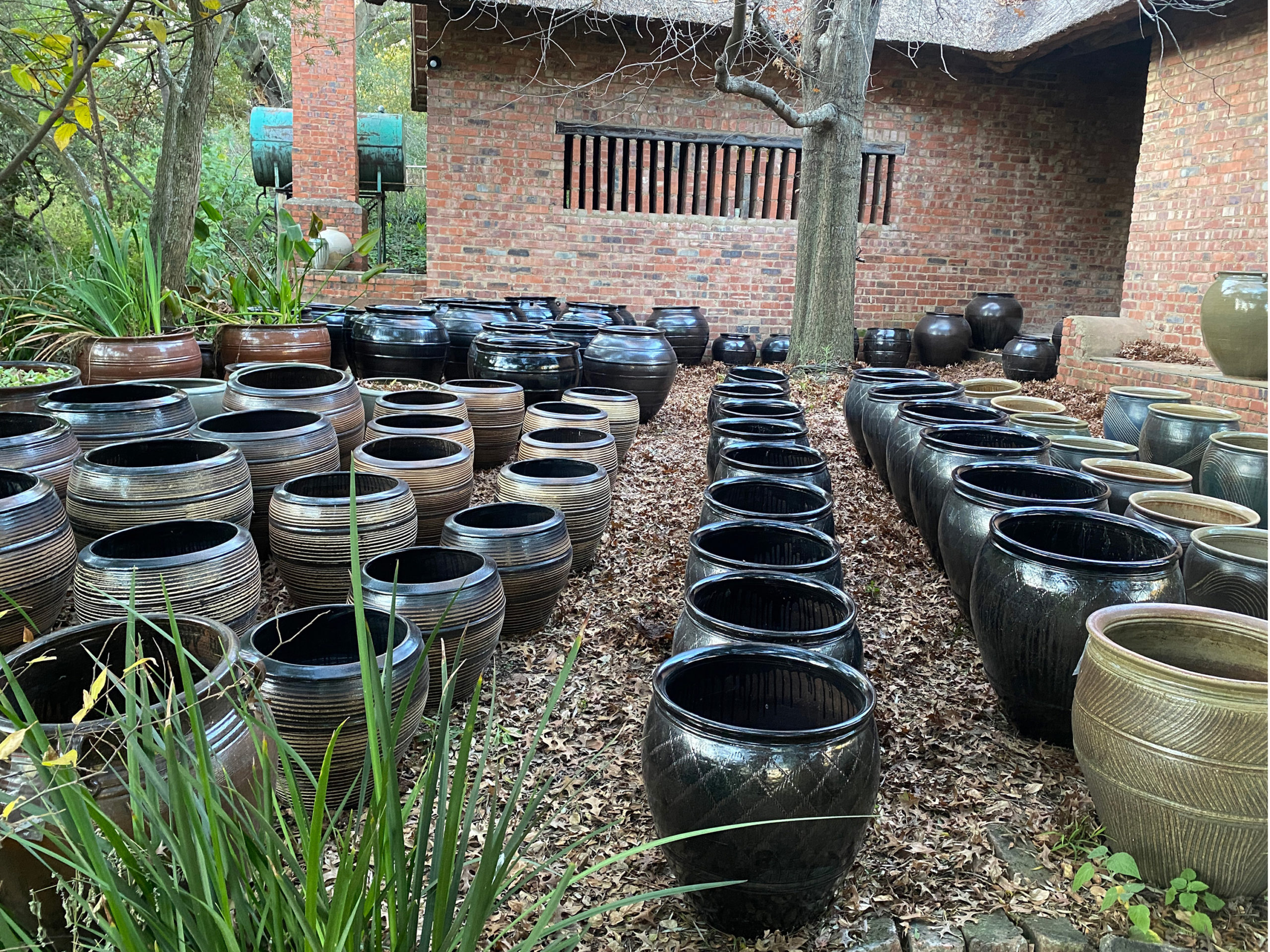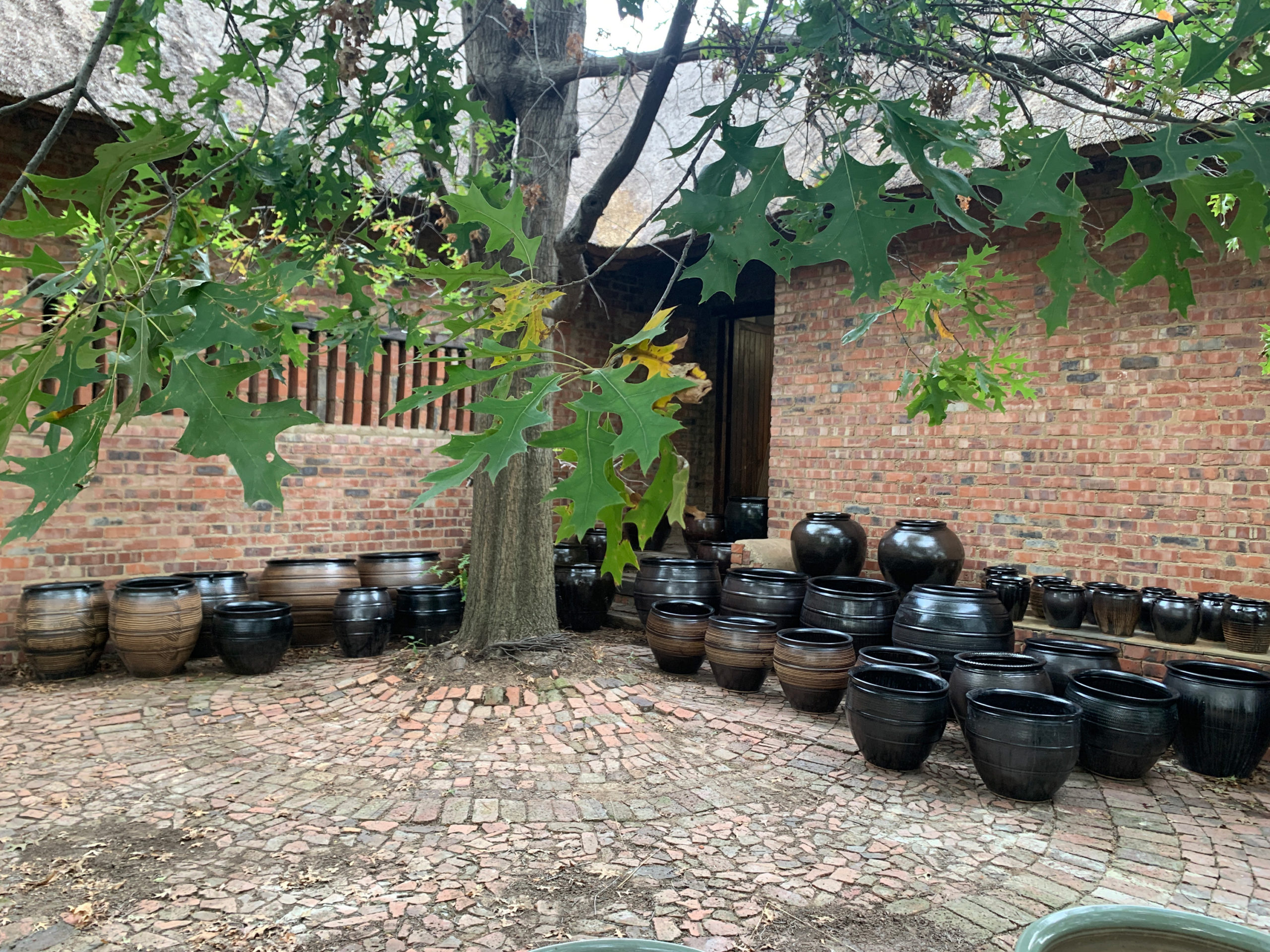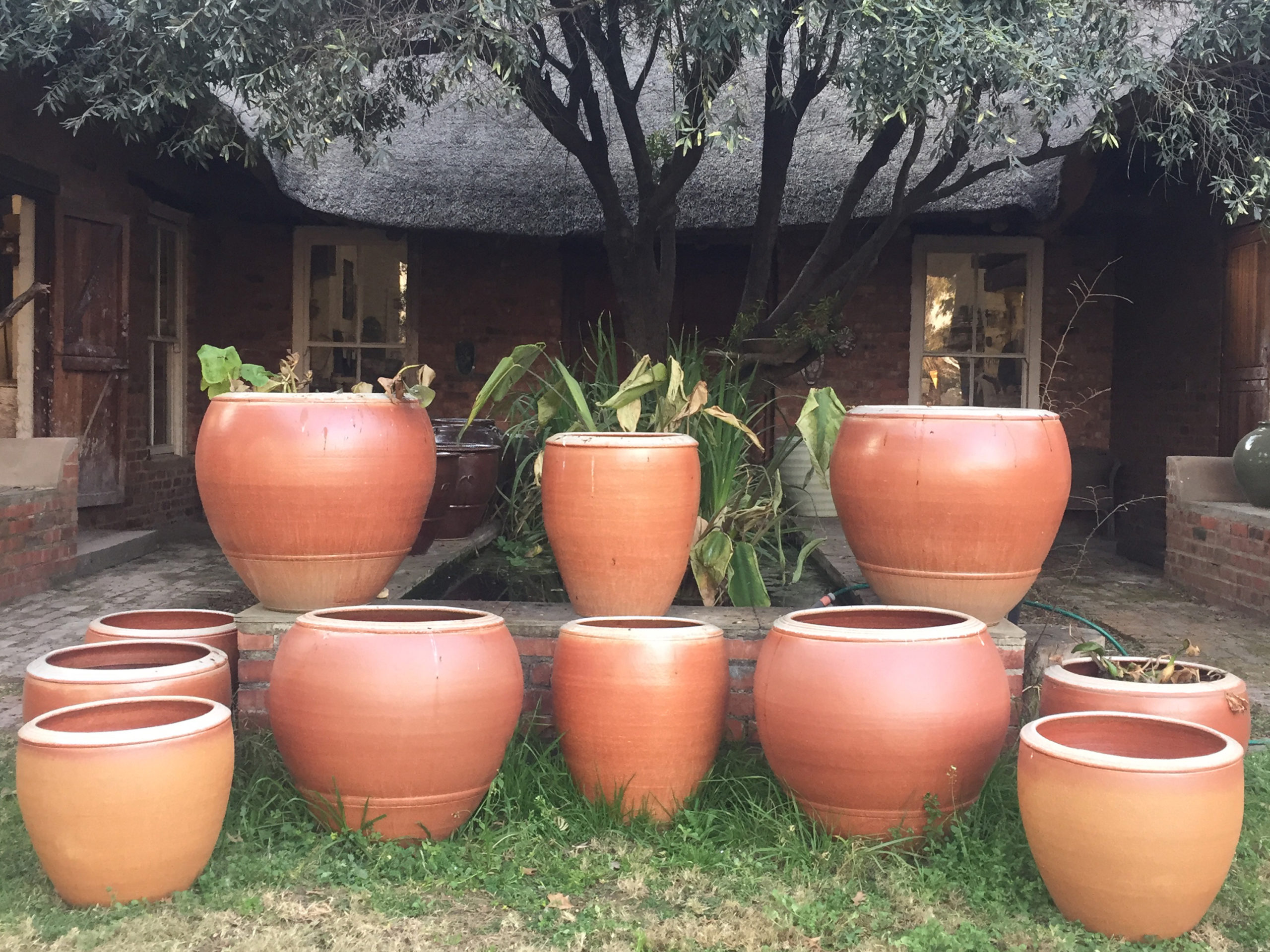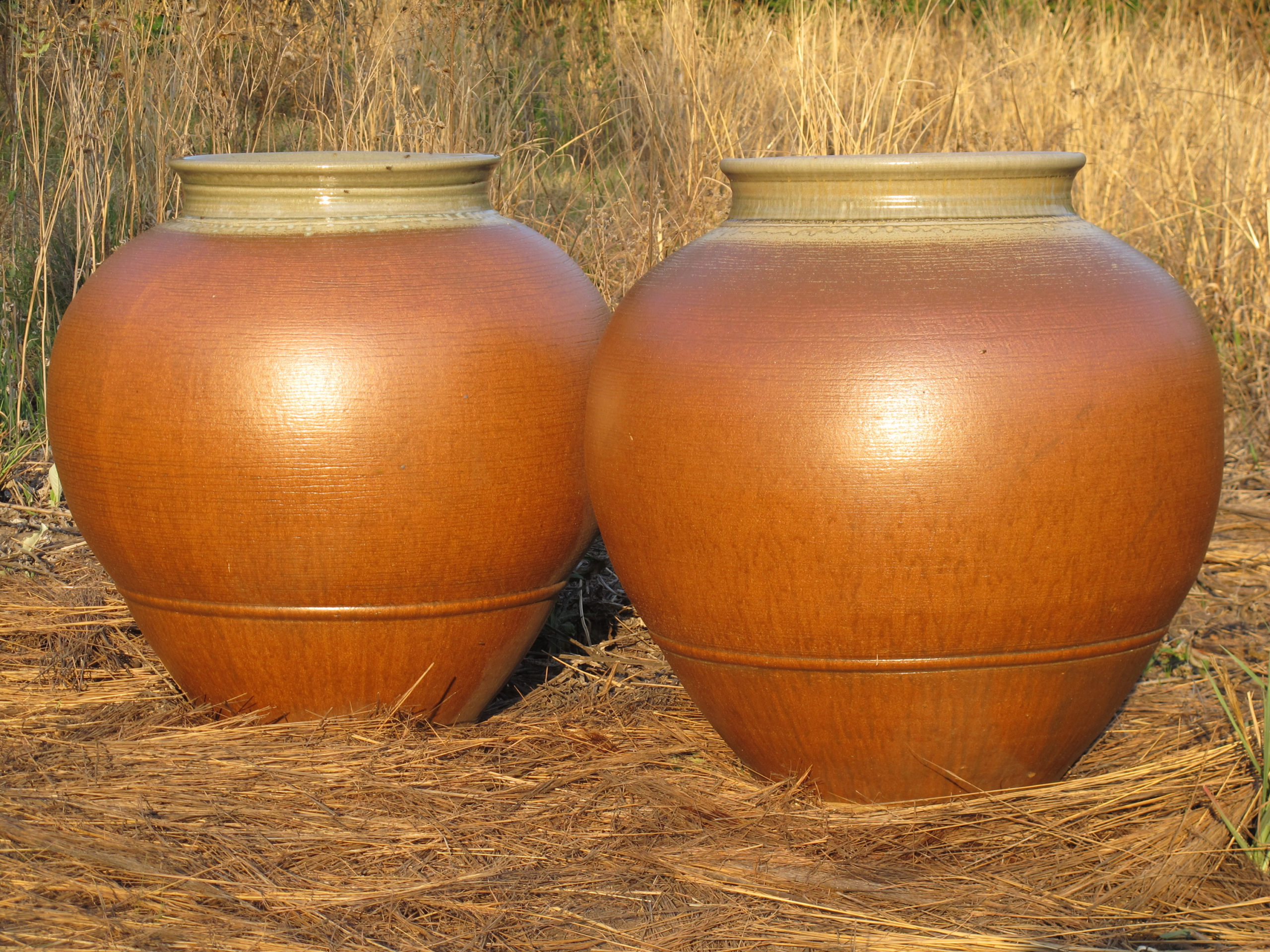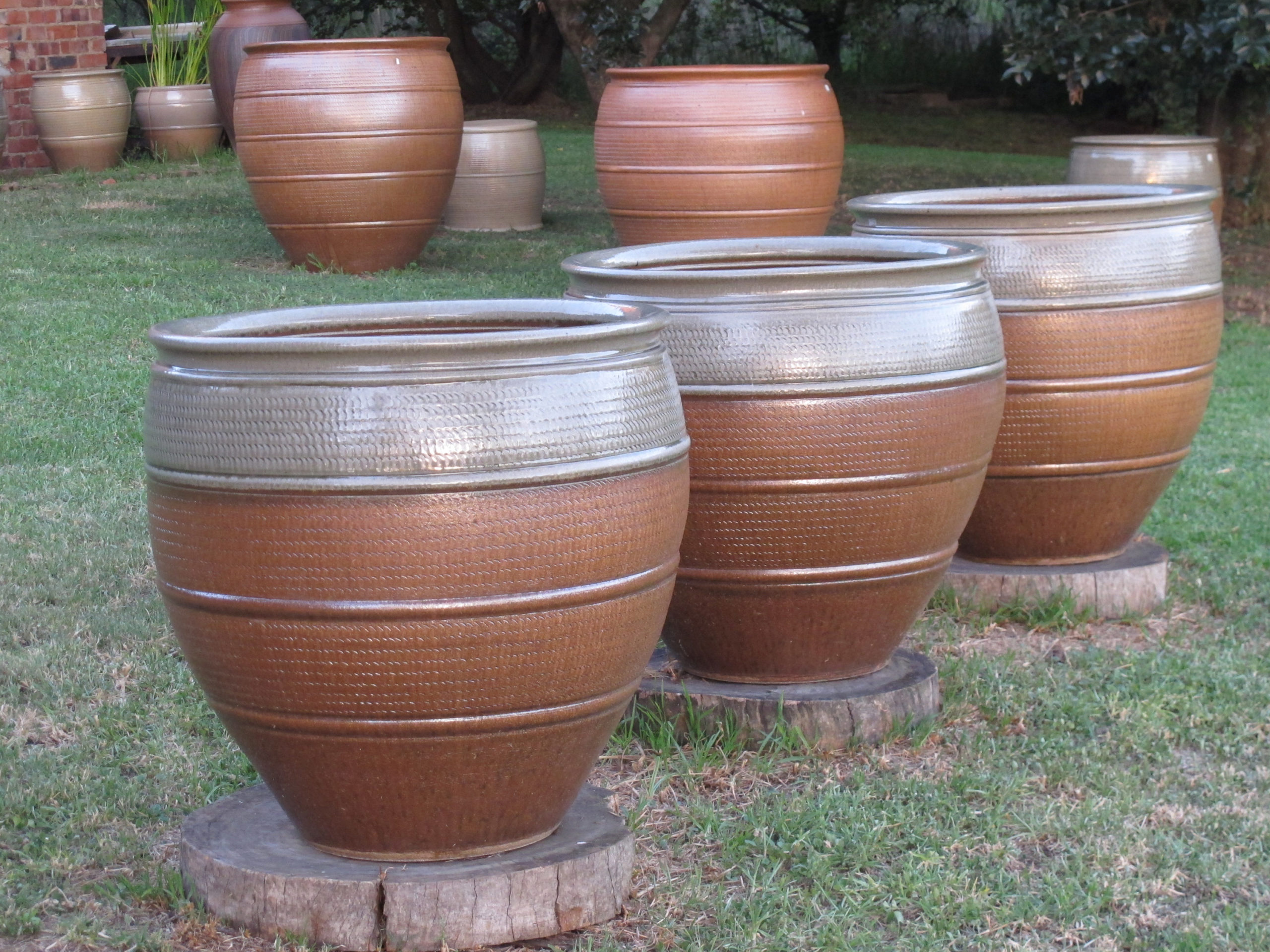Digby Hoets
International recognition of Digby Hoets’ ability to deliver large groups of related pots came in 2024: The renowned US designer and architect Peter Marino commissioned 45 pots for his major renovation of the CHANEL boutique in the historic La Mistralée Villa in St Tropez, France. This was followed in 2025 by a commission for 64 pots for a project for Marino for St Barths in the Caribbean.
For over fifty-five years, Digby Hoets has focussed on the creation of the large, visually cohesive ceramic forms that have become his signature. While crafting a single large vessel is itself a feat, the true challenge, he notes, lies in producing a series: multiple pots that appear uniform yet retain subtle, individual character.
Like many potters, Hoets began with domestic and flat-ware: bowls, teapots, jars and large platters and bowls, gradually scaling up as his skill and ambition grew. A turning point came when he shifted from electric to oil-fired kilns, enabling larger pieces and allowing him to embrace a process of raw glazing, eliminating bisque firing entirely. This change to raw-firing (single firing) fundamentally transformed his approach. Most of his glazes are based on simple materials which result in warm, natural colours that are in harmony with an African environment. His pots are reduction fired to 1380 degrees centigrade as the combination of high temperature, the reduction atmosphere and the wood ash glazes cause a reaction between clay and glaze which give him these rich glaze qualities and effects. His thatched studio (where he mainly exhibits his work) is in Carlswald, Midrand – a green, unexpected oasis of smallholdings amidst the sprawl of Gauteng’s urban development.
Hoets’ practice is rooted in dedicated repetition and refinement. Every 5–6 weeks, a new kiln-load emerges, each batch informed by the last. Subtle shifts: shape, scale, glaze tone, reflect a long arc of continuous improvement. This slow, iterative rhythm allows for both evolution and the quiet surprises that come from the kiln.
Even with decades of expertise, no two pots are truly identical. There will always be subtle differences in the shape and glaze of the individual pots making up a pair or group and it is these unintended variations, within the appearance of uniformity, that give a group of what appear to be identical pots their warmth, identity and ‘humanness’.
Info
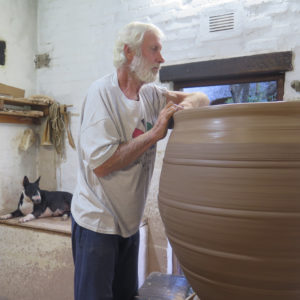
Digby Hoets
Activity
Artiste
Country, region
Afrique du Sud
Site web
www.digbyhoets.com
Biography
Digby Hoets Biography
Documents
Digby Hoets Potter’s Secrets Ceramic Review July 2023
Digby Hoets On a Grand Scale Ceramic Review 194 2002
Digby Hoets_Objects of consciousness and experience
National Ceramics Quarterly 58 Summer 2002 Digby Hoets
National Ceramics Quarterly 1987 Digby Hoets

